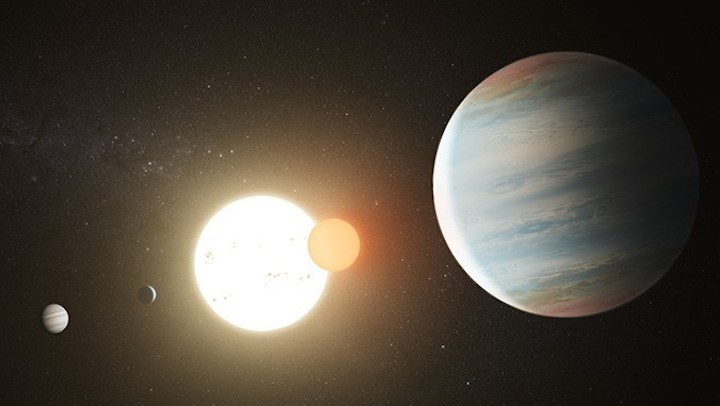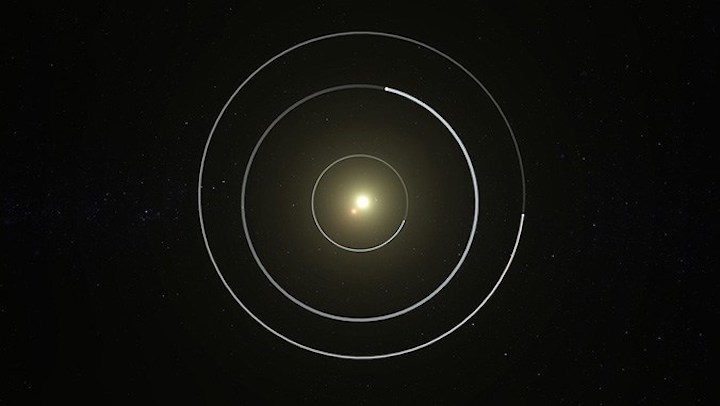19.04.2019

Artist’s rendition of the Kepler-47 circumbinary planet system with its three planets. Image courtesy of NASA/JPL-Caltech/T. Pyle
A team of astronomers, including one from the Institute for Astronomy (IfA) at the University of Hawaiʻiat Mānoa, discovered a third planet in the circumbinary planetary system Kepler-47.
This discovery cements the system’s title as the most interesting of the binary-star worlds, and marks the first complete planetary system around a binary star. Circumbinary planets are those that orbit both stars of a binary star system, like Tatooine in the Star Wars films.
“In 2015, we predicted the existence of a third planet in this system on dynamical grounds. It is great to see reality matches our prediction,” said Nader Haghighipour, astronomer with IfA.
With its three planets orbiting two stars, Kepler-47 is the only known multi-planet circumbinary system. The orbit of the outer planet of this system falls well within the binary’s habitable zone, the region where an Earth-like planet could maintain liquid water on its surface.

An overhead view of the Kepler-47 system’s orbital configuration. The two stars are visible in the center. Image courtesy of NASA/JPL-Caltech/T. Pyle
Discovery confirms predictions
The planets in the Kepler-47 system were detected using the transit method. This method relies on small decreases in the measured brightness of a star (or, in this case, a pair of stars), when a planet passes in front of the star as seen from Earth. The newly discovered planet, dubbed Kepler-47d, was not detected earlier because its distance from its host stars means it produces only a tiny transit signal.
“The discovery of Kepler-47d confirms two of our predictions—first, that planets form around binary stars the same way they form around single stars, and second, that they too can form complete systems,” says Haghighipour, who has developed theories of planet formation and habitability in circumbinary orbits.
The inner, middle and outer planets of Kepler-47 system are 3.1, 7.0 and 4.7 times the size of the Earth, and take 49, 187 and 303 days, respectively, to orbit around the central binary. The stars themselves orbit each other in only 7.45 days. One star is similar to the Sun, while the other has only one-third of the Sun’s mass. The researchers were surprised by both the size and location of the new planet. Kepler-47d is the largest of the three planets in the Kepler-47 system.
Quelle: University of Hawaií
